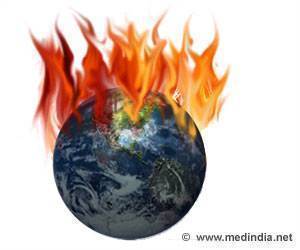The temperatures harken back to just over a year ago when nearly 1,500 people died during a late June heatwave that more than doubled average temperatures in the United States and Canada.
Yes, according to the latest analysis of the atmospheric circulation patterns and human-caused emissions that led to the 2021 heatwave in North America. The findings, published on July 22 in Advances in Atmospheric Sciences, may also explain the U.K.’s current heatwave.
Advertisement
Most of that increased probability is the result of greenhouse gases, according to their results.
Heat Waves and Climate Change
“An extraordinary and unprecedented heatwave swept western North America in late June of 2021, resulting in hundreds of deaths and a massive die-off of sea creatures off the coast as well as horrific wildfires,” said lead author Chunzai Wang, a researcher in the Southern Marine Science and Engineering Guangdong Laboratory and head of the State Key Laboratory of Tropical Oceanography at the South China Sea Institute of Oceanology, Chinese Academy of Sciences (CAS).
“In this paper, we studied the physical processes of internal variability, such as atmospheric circulation patterns, and external forcing, such as anthropogenic greenhouse gases.”
Atmospheric circulation patterns describe how air flows and influences surface air temperatures around the planet, both of which can change based on natural warming from the Sun and atmospheric internal variability, as well as Earth’s rotation. These configurations are responsible for daily weather, as well as the long-term patterns comprising climate. . Using observational data, the researchers identified that three atmospheric circulation patterns co-occurred during the 2021 heatwave: the North Pacific pattern, the Arctic-Pacific Canada pattern and the North America pattern.
“The North Pacific pattern and the Arctic-Pacific Canada pattern co-occurred with the development and mature phases of the heatwave, whereas the North America pattern coincided with the decaying and eastward movements of the heatwave,” Wang said. “This suggests the heatwave originated from the North Pacific and the Arctic, while the North America pattern ushered the heatwave out.”
But atmospheric circulation patterns can co-occur and have before without triggering an extreme heatwave, so how much was the 2021 event influenced by human activities? Wang and the team used the internationally curated, tested and assessed models from the World Climate Research Programme, specifically the Detection Attribution Model Comparison models of the Coupled Model Intercomparison Project Phase 6 (CMIP6).
“From the CMIP6 models, we found that it is likely that global warming associated with greenhouse gases influences these three atmospheric circulation pattern variabilities, which, in turn, led to a more extreme heatwave event,” Wang said. “If appropriate measures are not taken, the occurrence probability of extreme heatwaves will increase and further impact the ecological balance, as well as sustainable social and economic development.”
Source: Eurekalert



